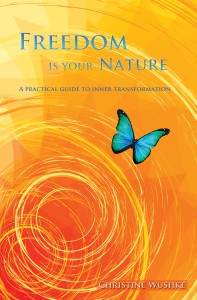My dear friend Joanne Avison said recently that “Fascia loves micro-movements.”
It is a timely message. As a yoga therapist I often hear feedback such as “I can’t do yoga because I’m not that flexible.” When did this practice become associated with such extreme ranges of movement that the average person feels they can’t even walk into a studio?
The purpose of my mantra is to dispel that myth.
Go Smaller
If you run a Google image search for “yoga poses,” 90% of the pictures shown are positions taken at the end range of movement. No wonder yoga has become synonymous with extreme flexibility! But is that really good for us?
Triangle pose is often taught with the cue to take your hand to the floor and hinge sideways from the pelvis, lengthening the torso as far you can to get there. This will involve, for most bodies, forcing your pelvis and hip joints as far as they can go. Not only is this movement unnecessary for hip mobility and functional movement, but it can actually be harmful for some people.
Simply moving your pelvis sideways a few inches can be of great benefit in freeing up your hips. And—if done slowly, in mindfulness, and with control—the movement will be balancing strength and flexibility at a more even ratio.
Move Smarter
Instead of aiming for that full range of motion, go to where you feel a tiny inkling of stretch sensation and then play within that range.
Do this in mindfulness. Do you have control in that little range? Do you feel shaky, or little jerks? See if you can do smaller movements; listen to your body’s cues, focusing on smoothness and control rather than achieving a specific shape.
Backing your poses up and incorporating slow smooth movements in this way will add a new depth to your practice. You will increase your proprioception and interoception by getting mindful and staying mindful as you move. This will increase your functional strength, and also strengthen your brain muscle! (More on this later.)
Get Stronger
If you usually do triangle pose with your hand on the floor, bring it to a chair instead. Or—better yet—go smaller still, and see of you can hover your hand in the air and feel your core engage in that range.
Draw your legs toward each other and go for strong legs rather than wide legs.
Instead of intending a lengthening action of your torso, practice core engagement.
Be mindful of each little muscular contraction. Strengthening doesn’t have to hurt, and it doesn’t need to be extreme. We can achieve a great deal of functional strength just by getting mindful and moving in small ways with deliberate control.
Did you know that there may be considerably more sensory nerve endings in the bodies fascial matrix than there are in the eye’s retina?
This makes your connective tissue fascial system the largest sensory organ—and the largest organ overall—of the body. It is much more sensitive, delicate, and responsive than most of us fully realise. It is also ubiquitous, found everywhere in the body. Therefore when it comes to moving, from a fascial point of view, less is often more, moving “small and smooth” for the detail. Similar to savoring a taste on your tongue, or closing your eyes to feel the breeze, smaller movements done in mindfulness are like a subtle deep-tissue dance party!
You can do these things regardless of your level of yoga expertise.
Whether you’re a beginner, advanced, or even an instructor, remember this:
It isn’t about how far you can go… but how much can you feel in going small.
